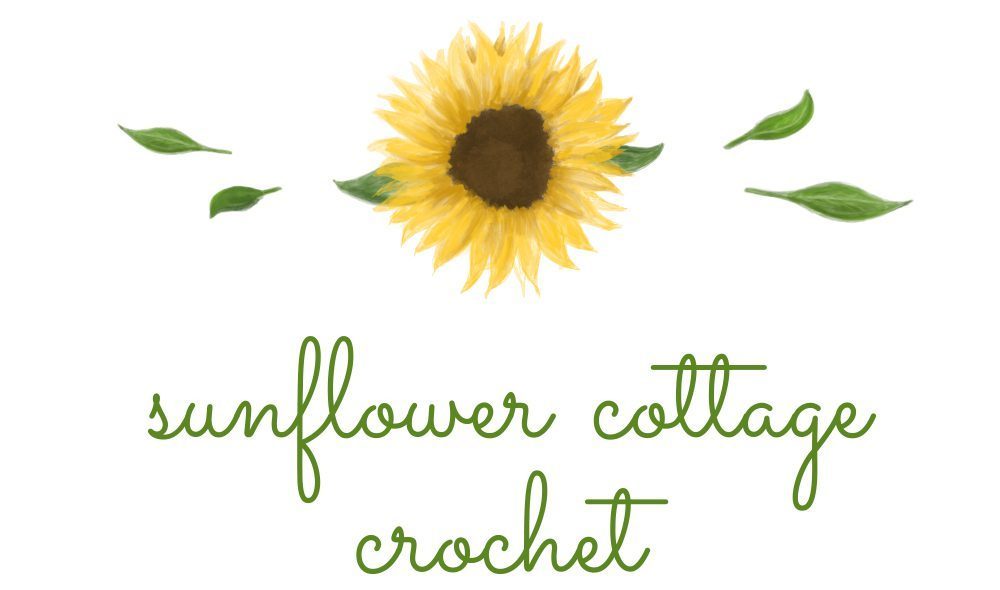Tunisian Crochet Series: Beginning Techniques

Welcome to the first in the Tunisian Crochet Series. We’re learning the beginnings (basics) in this introductory tutorial.
Helen and I love crochet and we want to share our knowledge of stitches and techniques with everyone! If you didn’t know, we have a corner-to-corner (C2C) course going as of the writing of this post (February 2021), which teaches you how to work the stitches involved along with the technique and color changing! Be sure to check that out, as well.
Background
Tunisian crochet is very similar to knitting. I have heard that many knitters have used Tunisian crochet to get into crocheting and vice versa! It really is a great combination of both crocheting and knitting, but I feel that it is the easier form of both.
The pattern format for Tunisian crochet is also a combination of how knitting and crochet patterns look. For knitting patterns, you might see:
- K1, P1
- P
- K
And so on. That would read as: row 1: knit one, purl one (knit the first loop, purl the next). Row 2 would read as purl stitch across.
For crochet, our patterns look more like this:
- ch5, sc in 2nd ch from hook and across
- ch1, turn, sc in each st across
Which, as we crocheters know, means for row one you need to chain up 5 and work 4 single crochet starting with the second chain from the hook. For row 2, you will ch1 and turn your work, single crochet in the first stitch and in each across. Tunisian, if you can imagine it, is a combination of those pattern formats.
Foundation row: crochet a foundation row
Row 1:
Forward Pass: TSS across, 1 edge st
Return Pass: Normal Return pass
Repeat row 1 for entire project.
So you can see that it really is a combination but it does look more like a knitting pattern than a crochet pattern.
Materials Needed for Tunisian Crochet
Since you’ve learned so far that Tunisian is a combination of Knitting and Crocheting–from the pattern format to the way it’s worked–you can bet that the tools involved are also a combination of the two.
Tunisian crochet hooks are long like knitting needles (and thin), but have a hook–like a crochet hook–on one end, with a “stop” on the other end (much like knitting needles).
There are lots of different styles of Tunisian hooks you can get! Wooden, metal, acrylic… All sorts of different styles to choose from. What’s most important is, what is comfortable and what can you trust? By trust, I mean, will it break or bend? I have found that the metal hooks are uncomfortable and will bend, thus ruining the shape of your project. Acrylic hooks can bend and break, but not bend as easily as metal, and not break as easily as wooden. Wooden won’t bend much at all, but will snap if you’re too rough on them. All good things to keep in mind. Maybe you will need to change your tension and relax. Crocheting should be fun and relaxing!
Materials needed for the Learn to Tunisian Crochet CAL
Since there are so many options out there for hook sizes and yarn types, I am putting together a list of things for you to get now, that will get you thru most if not all of this beginner series.
This post contains affiliate links, at no extra cost to you.
Aran/Worsted weight yarn of your choosing–I used Knit Picks Brava Worsted
More Tools!
Not just hooks, but sometimes, you might want to incorporate some knitting tools as well. Such as a cabling stitch holder. We won’t be getting into cabling any time soon, so I wouldn’t worry about that just yet!
You will still want a Tapestry Needle for weaving in ends and scissors as well as stitch markers. Especially the stitch markers for beginners! These are very handy tools for knowing where your last stitch needs to be worked and which stitches to skip, if necessary. If you’ve seen any of my instructional videos for our Friendship CAL squares, then you know I like to use stitch markers to help myself out. It’s not that I’m a beginner–I just like to make life easy!
Next Post: How Tunisian Crochet Works –
To prevent overwhelm, I’ve broken up the introduction to Tunisian Crochet into three bite sized posts Click here for the next post.
This is part 1.
Part 2: Click here to learn more about how Tunisian Crochet works, the stitch abbreviations yarn and hook sizing, some info about curling and, foundation rows, forward and return passes and edge stitches.
Intoduction Part 3: To learn more about how to identify bars, how to bind off, and some helpful hints and tips click here!
For a quick video guide through the basics of working Tunisian Crochet (identifying different parts of the stitch, how to start a Tunisian Crochet project and how to bind off, the forward and return passes) click the video below. This video covers most of the practicalities of what you need, although you may out on a couple of tip and tricks and some extra information if you don’t read the blog posts above!
Video Tutorial
Finishing Up Your Squares
I highly recommend blocking your squares. Here’s a great blocking set I found on Amazon. If you haven’t blocked before, I have a video for that here:

